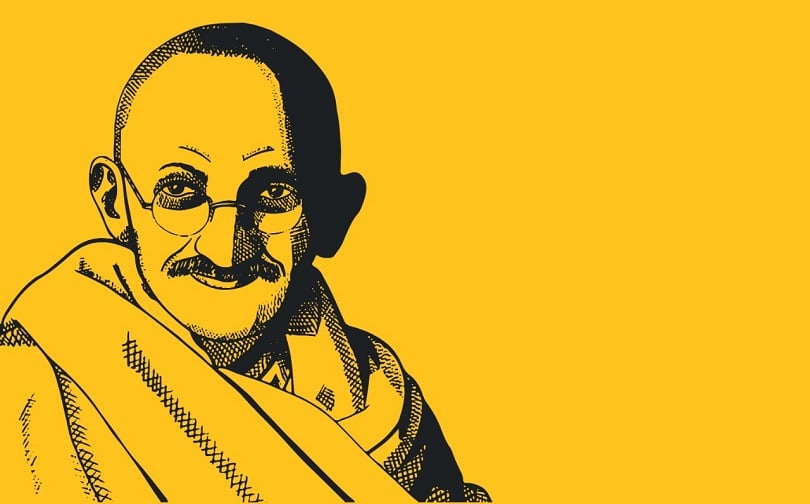In a letter to a friend in 1911, M.K. Gandhi made a commentary that changed the standard of moral absolutism related to him. “I see a demise in candies,” he wrote, correlating the enchantment of goodies with the development of excessive passions. Chocolates, he went on to mention, inflamed greed, making us prone to gluttony. As historian Nico Slate puts it in his new ebook, Gandhi’s Search For The Perfect Diet: Eating With The World In Mind, “For Gandhi, a sweet enamel changed into the closing gateway drug, weakening self-control and paving the manner to a life of reckless hedonism.”

Like the entirety else in his life, Gandhi’s mindset on food changed into complicated, usually evolving, and often self-contradictory. His disapproval of chocolate, for instance, was no longer connected so much to the capacity fitness dangers it posed as to his recognition of the exploitation of slave labor on sugar plantations the world over. But at the same time as Gandhi remained militantly against sugar, accusing it of being the harbinger of lust, he additionally had a lifelong weakness for sweet culmination, especially mangoes. Similarly, even though he roused the entire country to take part in the salt satyagraha in 1930, Gandhi remained a staunch recommend of a salt-free weight loss plan, averting salt in his meals for years.
For Gandhi, the question of selecting an eating regimen was inexorably tied to the expression of his political views. His body became the website online where this courting was performed through his rejection of meat and processed ingredients or the periodic fasts he undertook. As Gandhi found out over the years, his pursuit of the precise food plan would stay elusive—continually a piece in development, built on foundations that have been periodically shaken via his precarious fitness or challenged with the aid of clinical findings.
The result of scholarly research, Slate’s ebook, demystifies Gandhi’s nutritional politics for the common reader. Structured across the pillars of his food plan—“vegetarianism, restricting salt and goodies, rejecting processed food, ingesting uncooked food, (and) fasting”—the ebook additionally displays the prescience with which Gandhi expected modern-day moves for the moral production, intake, and dissemination of meals. Long earlier than zero-waste lifestyles and vegan diets received social forex, he turned to experimenting with those modes of living. Like most early adopters, he was brought about to modify what he seeks by the exigencies of his time and his health demands.
At Tolstoy Farm in South Africa, as an example, Gandhi entreated the citizens to grow their plate meals. He endorsed the intake of raw greens and fruits, partly to allow girls to get a reprieve from the kitchen. As his belief in non-violence as the guiding principle of a morally upright life grew more potent, Gandhi determined to give up cow’s milk. But continual infection forced him to consider drinking goat’s milk.
Thus, a committed vegetarian for most of his life, Gandhi remained a lapsed vegan. Even though as early as the Thirties, he had already tried out substitutes like almond jelly, peanut milk, and soybean, with various tiers of fulfillment.
Despite his unshaken adherence to vegetarianism, Gandhi changed ways from being adverse towards meat-eaters, except possibly for the individuals of his own family. When a weak and emaciated Kasturba Gandhi was administered, unbeknown to her, a beef broth using a health practitioner in South Africa while she was recovering from a surgical treatment, Gandhi was furious. He refused to tolerate such transgressions, even though it may have stored her existence.
He turned inclined to offer a long rope to meat-eaters in any other case, mainly to those who had been combating with him in the quest for independence. Else “we ought to must exclude Mussalmans and Christians and a vast quantity of Hindus as viable co-people in ahimsa,” he told a meeting in 1940, pointedly adding that he knew “many meat-eaters to be a long way more non-violent than vegetarians.”
In present-day India, whilst individual dietary alternatives tend to incite lynch mobs, Gandhi’s aversion to violent vegetarianism stands proud in the stark evaluation of the cow protectors’ evangelism. “The simplest technique I understand of defensive the cow is that I ought to technique my Mahomedan brother and urge him for the sake of u. S. To join me in protecting her,” he wrote. “It isn’t faith, but the need for it, to kill a Muslim brother to store a cow.” Coming from a countrywide icon who loved the cow as one of the noblest creatures on the earth, this type of sentiment left Hindu revivalists from the Arya Samaj seething, as it would perhaps many today.









